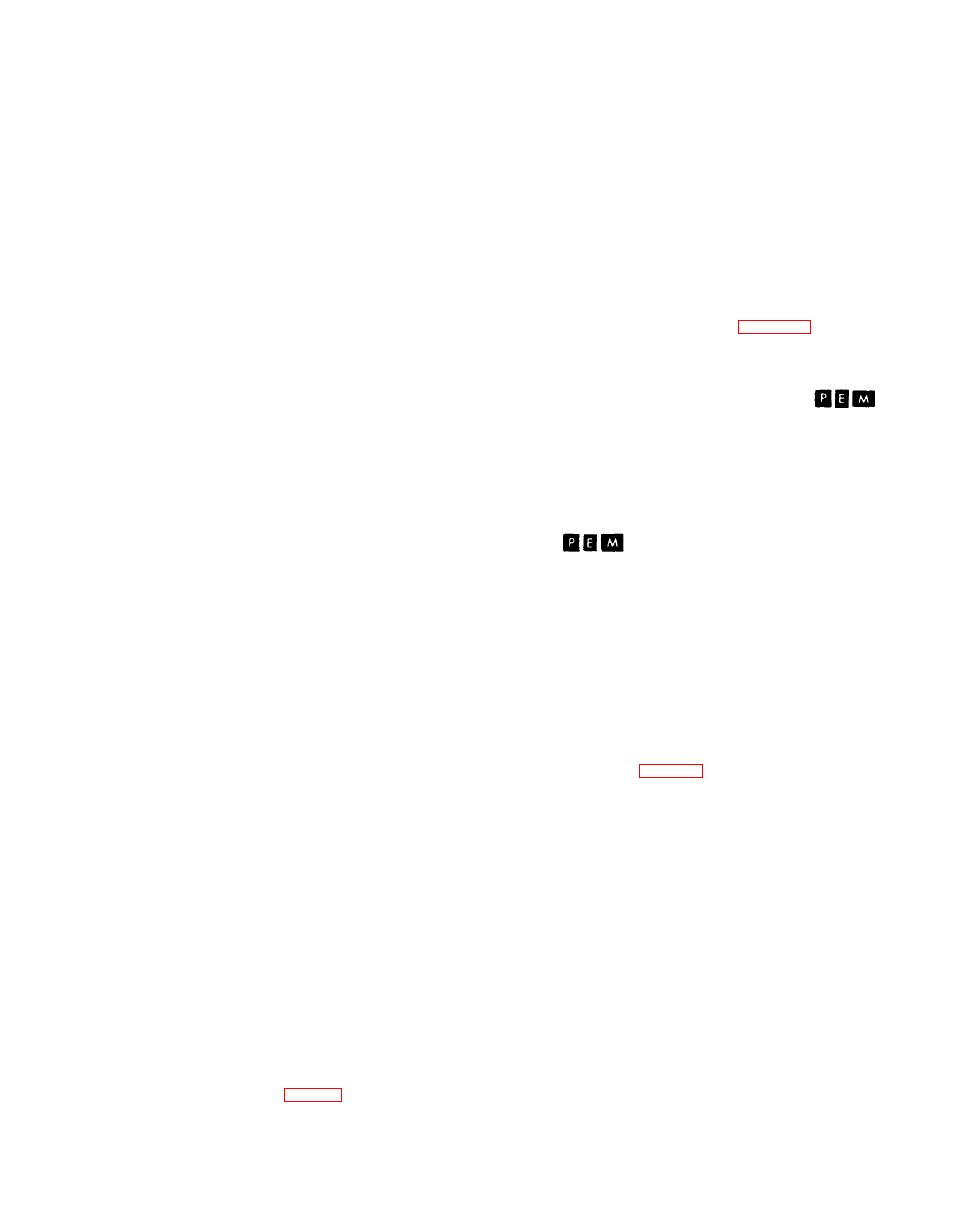 |
|||
|
|
|||
|
Page Title:
Section III. THEORY OF OPERATION |
|
||
| ||||||||||
|
|
 TM 9-1270-212-14&P
Section III. THEORY OF OPERATION
for foldouts (FO-3 through FO-10 and FO-10.1), located at
1-17. General.
the end of the manual.
a. This section provides the mechanical, electrical, and
electronic theory of HSS operation. The theory is intended
primarily as a maintenance tool for fault isolation at both
The parts of the HSS are interconnected mechan-
the system and the subsystem levels.
ically and electrically as shown in figure 1-6. The HSS
interfaces with the helicopter by means of three connec-
a. 1. Where XM128 differs from XM136, the differences
tors. A helicopter comector behind the pilot's seat mates
are discussed in this section. If no difference is mentioned,
with J1 on the EIA; this helicopter connector is P261 in the
the two models are identical.
AH1S(Mod) helicopter and 17A1P1 in the AH-lS
helicopter. A helicopter connector at the left of the pilot's
(1) The schematic diagram for the EIA used in
seat mates with helmet sight connector A1P1 for the pilot,
XM128 is foldout FO-4 and the schematic diagram for the
and another helicopter connector at the right of the
EIA used in XMl36 is foldout FO-5; where reference is
gunner's seat, with helmet sight connector A1P1 for the
made to "foldout FO-4 or FO-5," consult the schematic
gunner. In the AH-1S(Mod) helicopter, the connector to
diagram applicable to the EIA in your HSS.
which A1P1 for the pilot mates is P260 and the mating
connector for A1P1 for the gunner is P247; in the
(2) Although the logic card in the EIA used in
AH-1S
helicopter, the pilot's helicopter connec-
XMl28 is designated A10 and the logic card in the EIA
tor is 17P2 and the gunner's, 17P1. The signals carried by
used in XM136 is designated Al5 and separate schematic
the HSS connectors are identified on the detailed
diagrams are provided (foldout FO-7 for card Al0 and
schematics.
foldout FO-10.1 for card Al5), these cards perform the
same functions in the EIA and have identical circuitry in
most areas. Therefore, where a discussion is equally
a. HSS Power. Unregulated 28-volt dc power to operate
applicable to both card Al0 and card Al5, both designators
the HSS is provided from the helicopter through the turret
have been shown, separated by a slash (for example, "card
power circuit breaker and through the MASTER ARM
Al0/Al5" and "XA10/XAl5-5"), and the same method
switch set to STBY to J1-L of the EIA, and 115-volt,
has been used to reference the two schematic diagrams.
400-Hz ac power is provided through the HSS power circuit
(There is no Al5 in the EIA used in XM128 and no A10 in
breaker to J1-J of the EIA. (This control and these circuit
the EIA used in XM136.)
breakers are shown in figures 2-1, 2-6, and 2-7.) Within the
EIA, the 28-volt dc power is distributed to PS1-1, to TB1-6,
b. The HSS contains no operating controls but is
and to XAl0/XAl5-6; and the 115-volt ac power is
operated and tested from controls and indicators mounted
distributed to Ml-1, to T1-1, to T2-5, and to T3-5. Refer to
on the helicopter cockpit panels and is powered by the
foldout FO-4 or FO-.5.
helicopter. HSS cockpit controls and indicators consist of a
brightness control for the reticle in each helmet sight; a test
(1) Power supply module PS1 receives unregulated
switch for testing the lamps that light the reticle in each
28-volt dc helicopter power and converts it to 28-volt dc
helmet sight; a switch that initiates a built-in-test (BIT) of
regulated power for use in the EIA. Refer to foldout F04
the electronic interface assembly (EIA) and pilot and
or FO-5, sheet 2. Components C2, C3, FL1, and FL2 are
gunner linkages; and four indicators that indicate the results
connected to the power supply to allow the EIA to meet
of the BIT.
the electromagnetic interference (EMI) requirements of the
helicopter. The regulated 28-volt output is distributed as
c. The theory discussions are arranged, by function, in
listed for electrical common point 3 (ECP3) on the
the following order: HSS and helicopter interconnect, HSS
schematic.
power and reticle power, helmet sight theory and reticle
lamp test, linkage and EIA theory, and BIT theory.
(2) The items connected to the PSI 28-volt regulated
Appropriate functional diagrams are provided to simplify
output are protected from PSI overvoltage by a crowbar
the presentation. Detailed schematics are located together
circuit located on TB1 (refer to foldout FO-4 or FO-5,
at the end of the section (figs. 1-11 through 1-13) except
|
|
Privacy Statement - Press Release - Copyright Information. - Contact Us |